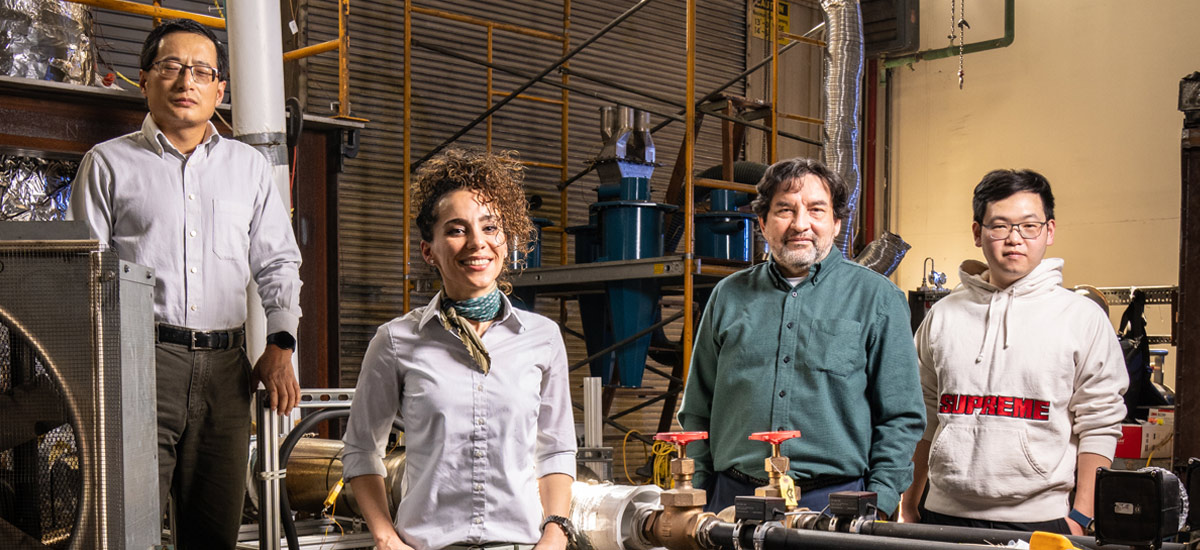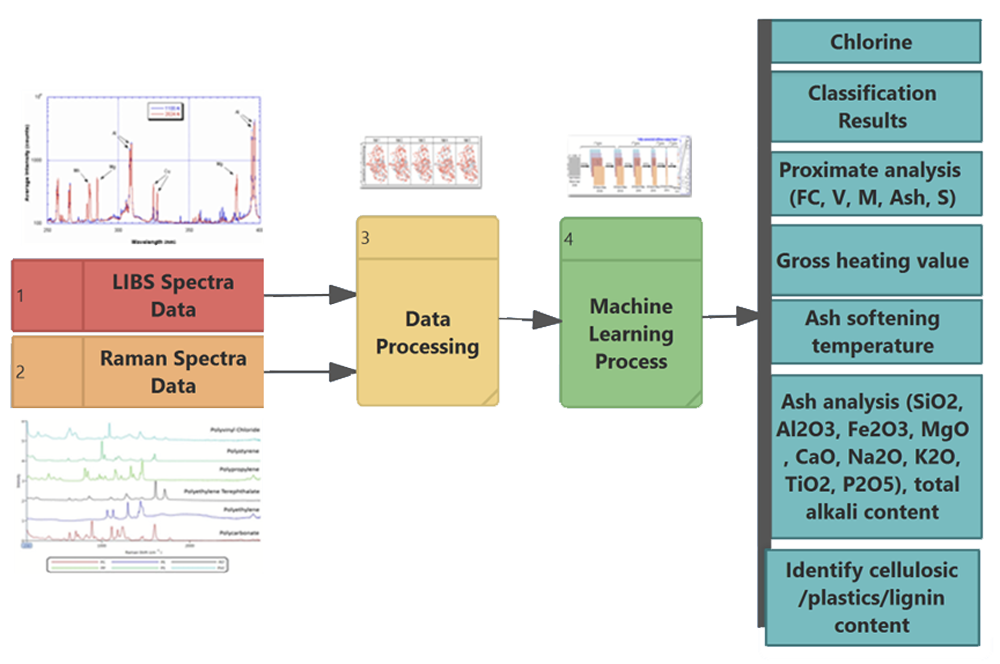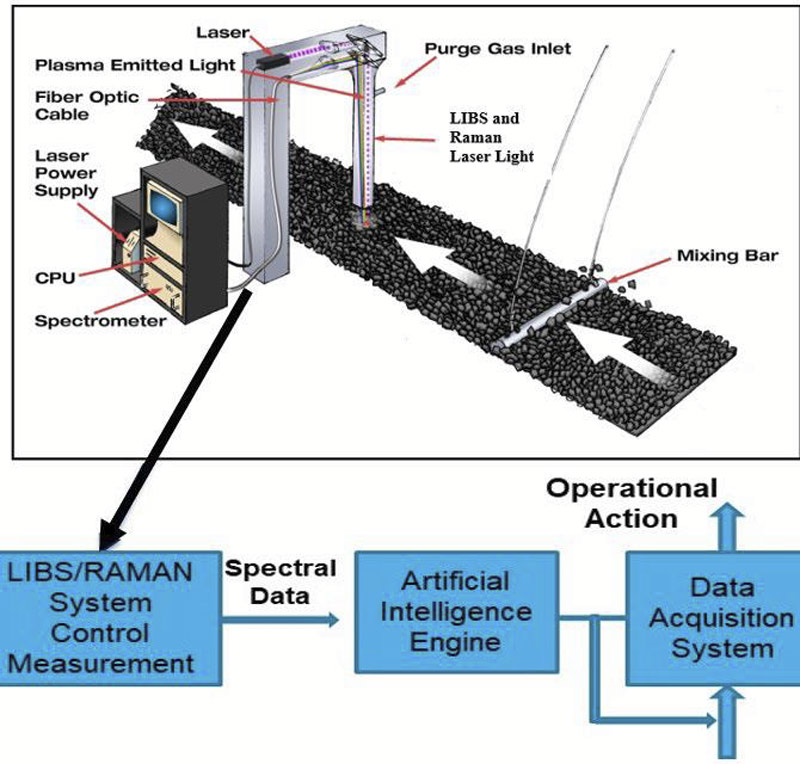
Resolve Magazine Fall 2023 >> Making Sense of Machine Learning >> Stories >> Making garbage greener
![]() Shifting away from an economy based on fossil fuels will require, in part, a more efficient way of producing hydrogen, a clean fuel that yields an innocuous by-product: water.
Shifting away from an economy based on fossil fuels will require, in part, a more efficient way of producing hydrogen, a clean fuel that yields an innocuous by-product: water.
One way hydrogen is currently produced is through gasification, a technology in which power plants called gasifiers convert carbon-rich material like coal, biomass, and waste into synthetic gas that can be used to produce electricity, among other things. The use of municipal solid waste (MSW) as feedstock for the process is an attractive idea on many fronts, but the heterogeneous nature of trash—just think of the range of stuff you toss in your own can—reduces the efficiency and yield of the gasifiers.
 “It also affects the operation of the gasifier and the hydrogen that’s produced,” says Carlos Romero (top photo, second from right), Director and Research Professor of Lehigh’s Energy Research Center (ERC).
“It also affects the operation of the gasifier and the hydrogen that’s produced,” says Carlos Romero (top photo, second from right), Director and Research Professor of Lehigh’s Energy Research Center (ERC).
Romero and his team of researchers and partners (Energy Research Company, The U.S. National Energy Technology Lab, University of Toledo, ThermoChem Recovery International, Inc. and SpG) have developed a machine learning approach to provide real-time, in situ information on the quality of the MSW flowing on conveyor belts into gasifiers. That information allows gasifier operators to adjust their operation to get the most hydrogen out of their systems.
“We use two laser-based spectroscopic techniques, Raman and LIBS, that shoot lasers onto the MSW as it travels along the conveyor belt,” says Zheng Yao (top photo, left), a Principal Research Scientist at the ERC. “The two lasers produce two spectra of light that are then fed into machine learning models.”
 The models analyze the input and essentially produce on-line data of the MSW’s quality that the operator can use to adjust the operation of the gasifier in real time. For example, says Farrah Moazeni (top photo, second from left), an assistant professor of civil and environmental engineering, “if the caloric value of the incoming material is too low, the operator can supplement the MSW using a different stream of trash."
The models analyze the input and essentially produce on-line data of the MSW’s quality that the operator can use to adjust the operation of the gasifier in real time. For example, says Farrah Moazeni (top photo, second from left), an assistant professor of civil and environmental engineering, “if the caloric value of the incoming material is too low, the operator can supplement the MSW using a different stream of trash."
This method has already proven effective, and the next step is developing a prototype by the end of the year, and ultimately, commercializing the technology.
“This is a completely novel application of machine learning, which is producing high-quality, very accurate, very repeatable information on the quality of the feedstock,” says Romero. “And it’s helping us get another step closer to the hydrogen economy.”
Main image: Ryan Hulvat/Meris; Figures: Courtesy of ERC



